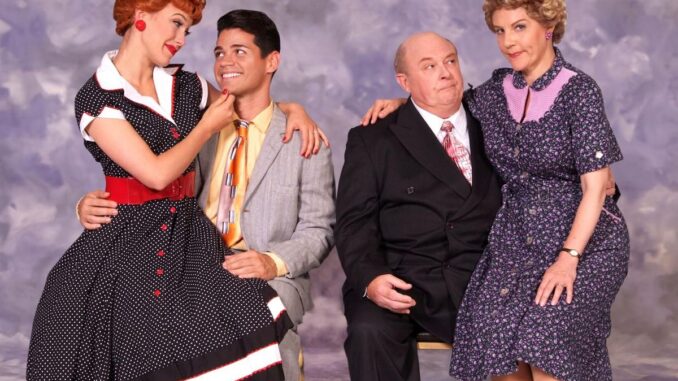
Unpacking Being the Ricardos: Accuracy, Artistic License, and Behind-the-Scenes Drama
:max_bytes(150000):strip_icc():format(webp)/being-the-ricardos-BTR_2021_UT_210507_WILGLE_00055R-2_rgb-cfb1f465bc5940f9a585ef747605edd8.jpg)
Before Being the Ricardos premiered, I Love Lucy fans eagerly anticipated how the film would portray Desi Arnaz, Lucille Ball, and their groundbreaking show. Aaron Sorkin’s film ultimately delivers a portrayal more accurate than many feared, though it faces criticism for casting a Spaniard in the role of the renowned Cuban Arnaz.
Sorkin’s film is notable for its meticulous attention to detail in recreating sets, costumes, and the personal lives of Lucy and Desi. The narrative centers on a particularly turbulent week in I Love Lucy’s production, highlighting how a series of crises affected the show’s future and strained their relationship.
Timeline Compression: A Week of Multiple Crises
A major deviation in Being the Ricardos is its compressed timeline. The real I Love Lucy team faced numerous challenges over its six-season run, but the film consolidates several major issues—such as the Red Scare, Desi’s infidelity, Vivian Vance’s discontent, and Lucy’s pregnancy—into a single week, which did not actually occur all at once.
Misrepresented Episode
The film’s plot revolves around Lucy’s involvement in the Red Scare, but it inaccurately identifies the episode in production. The film depicts “Fred and Ethel Fight” being filmed during the crisis, while the actual episode at that time was “The Girls Go Into Business,” from a different season.
Meeting on Too Many Girls
The film correctly shows that Ball and Arnaz met on the set of Too Many Girls at RKO, although some details are dramatized. Arnaz did not recognize Ball outside her burlesque costume from Dance, Girl, Dance. Despite their rocky relationship, their connection was immediate, leading them to leave their fiancés and be together.
Desi’s Infidelity and Confidential Magazine
Desi Arnaz’s notorious infidelity is portrayed accurately, including a January 1955 Confidential magazine story that highlighted his affairs. Although Confidential was known for sensationalism, this particular story was based on truth.
Desi’s Business Innovations
The film rightly emphasizes Desi Arnaz’s role as a visionary in television. Along with cameraman Karl Freund, Arnaz developed the multi-camera setup in front of a live audience, which became a standard in TV production. This innovation allowed I Love Lucy to be filmed on high-quality film, significantly impacting the industry.
William Frawley’s Alcoholism
Frawley’s depiction as a heavy drinker is exaggerated for comedic effect. While his alcoholism was a known issue, Arnaz’s agreement ensured Frawley’s performance remained unaffected. Despite his drinking problems, Frawley’s dedication and professionalism earned him a lasting friendship with Arnaz.
Vivian Vance’s Frustrations
The film highlights Vivian Vance’s frustrations with her role as Ethel Mertz and her desire to appear younger. Although Vance did express dissatisfaction with her character and role, she and Ball maintained a close friendship and continued working together after I Love Lucy.
The Red Scare
The film’s focus on the HUAC investigation into Ball’s alleged Communist ties is largely accurate. Ball did hear about the investigation from Walter Winchell’s radio report, though not in the dramatic context shown. She had registered as a Communist in 1936 but later clarified her stance to HUAC. Arnaz’s public support was crucial in addressing the crisis.
J. Edgar Hoover’s Role
The portrayal of J. Edgar Hoover intervening to clear Ball’s name is dramatized. Hoover did support Ball behind the scenes as a fan of the show and a friend of Arnaz, but his involvement was not as publicly pronounced as depicted in the film.
The Philip Morris Incident
The film accurately depicts Arnaz’s confrontation with Philip Morris over including Lucy’s pregnancy in the show. Arnaz’s direct appeal to Philip Morris Chairman Alfred Lyons led to a memorable note demanding respect for Arnaz, reflecting the true nature of their negotiation.
In conclusion, Being the Ricardos provides a largely accurate portrayal of the behind-the-scenes challenges of I Love Lucy, though it takes some creative liberties for dramatic effect.
